Bit Error Rate (BER) Module for WITE32
- BER 747A Test
- BER Linear Density Test
- BER Error Distribution Test
- BER Performance Test
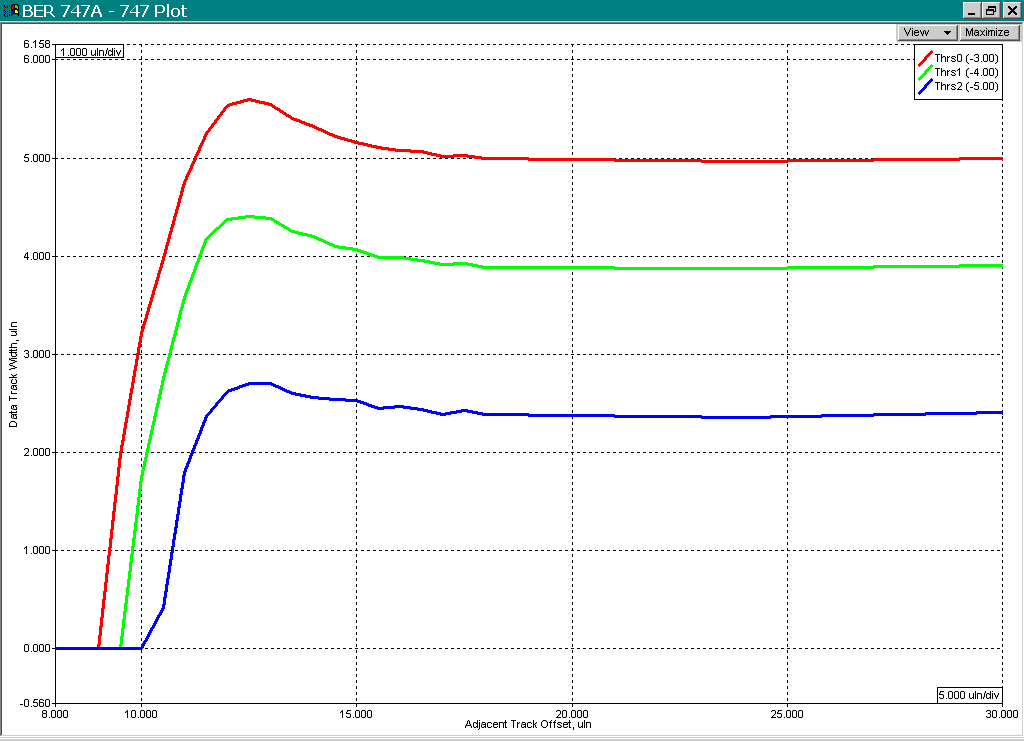
The BER Module is designed to provide various tests based on Bit Error Rate (BER) measurement using PRML channel. The module contains the following tests:
- BER 747A – evaluation of BER degradation after writing of the adjacent tracks
- BER Linear Density – evaluation of BER dependency on the signal data rate
- BER Distribution – evaluation of error distribution against different factors (position on the track, error length, written bit sequence, and read bit sequence)
- BER Performance – production test, which measures on-track BER and the track width for the given BER thresholds for different position of the adjacent track
BER 747A Test
The BER 747A test is an engineering tool to evaluate BER degradation with writing of the adjacent track. The test allows you to specify up to five thresholds for the 747 plot and evaluate bathtub variation versus position of the adjacent tracks.
Depending on parameters, the test can perform single read-only BER measurement at a given offset from the track center, or complete sequence of band erase, writing side tracks, writing the signal track, writing the adjacent tracks sweeping position, building bathtub curve, and calculating results.
The test provides numeric results, stores all measured data in a file using the CSV format, and shows the following three plots:
- 747 Plot – Track width measured using BER thresholds versus adjacent track position
- Bathtub Plot – A family of BER graphs versus the read head position for different adjacent track positions
- Off-Track BER Plot – A family of BER graphs at a given offset versus adjacent track position
The purpose of the test is to determine optimum track spacing for the head and media combination.
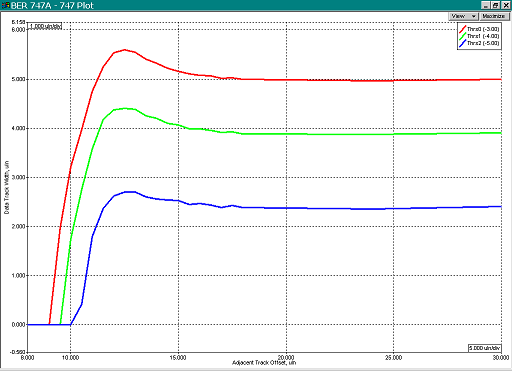
Figure 1: 747 Plot
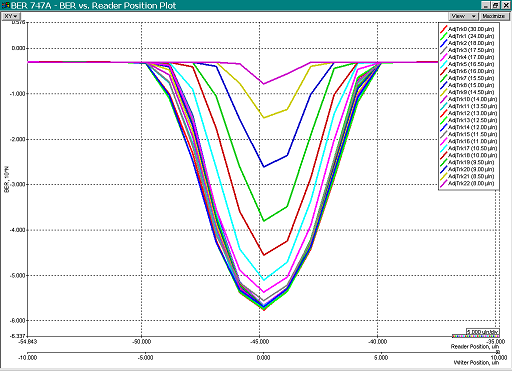
Figure 2: Family of Bathtub Graphs for Different Positions of Adjacent Tracks
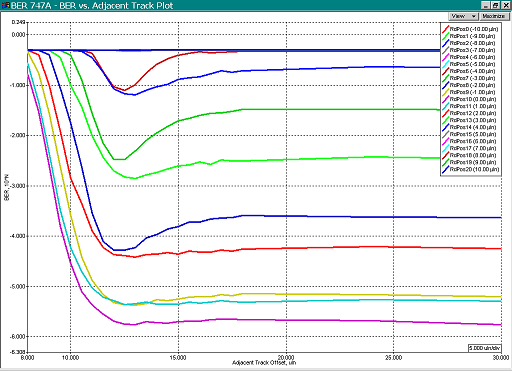
Figure 3: BER Versus Adjacent Track
BER Linear Density Test
The BER Linear Density Test is an engineering tool to evaluate BER dependency on the signal Data Rate (roll-off curve of BER versus frequency).
For frequencies in the specified range, the test performs a band erase, writes the side tracks, writes the signal track, writes the adjacent track in the single position, and measures BER. The test either measures one BER value for single offset, or it builds the bathtub curve for multiple offsets in the specified range. The test performs PRML channel optimization periodically to achieve the best BER for each data rate.
The test provides numeric results, stores all measured data in a file using CSV format, and shows the following two plots:
- Bathtub Plot – A family of BER graphs versus the read head position for different frequencies
- Off-Track BER Plot – A family of BER graphs at a given offset versus signal frequency
The purpose of the test is to determine the optimum data rate (linear density) for the head, media, and PRML channel combination.
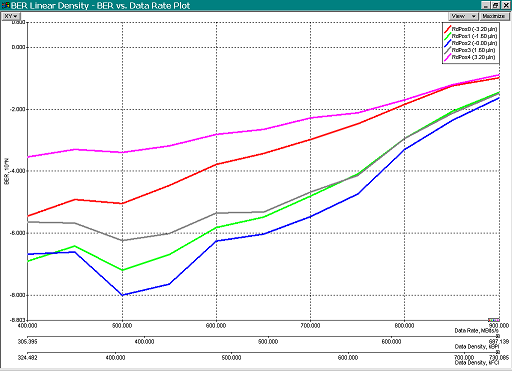
Figure 4: BER Roll-off Curve Versus Frequency
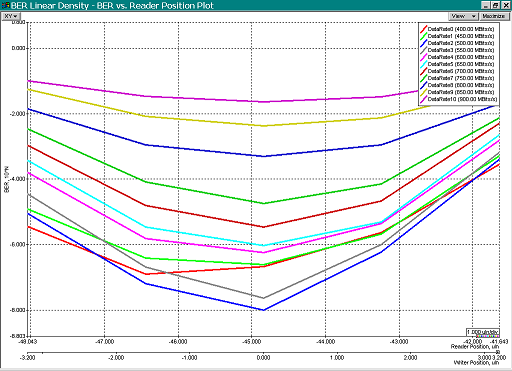
Figure 5: BER Versus Reader Position
BER Distribution
The BER Distribution Test examines the distribution of errors detected by PRML channel versus four parameters and provides the following plots:
- Error Length Plot – Number of errors of defined error length
- Sector Number Plot – Error distribution across a revolution
- Written Byte Plot – Number of errors, which occurred during writing a particular byte of the user data pattern
- Read Byte Plot – Number of errors during reading a particular value back from the media
The first plot allows predicting the error rate after applying the user error-correction algorithm. The second helps to detect sectors having defects for the selected track and exclude them from the subsequent testing. The third and the fourth show the encoding scheme performance in the PRML channel.
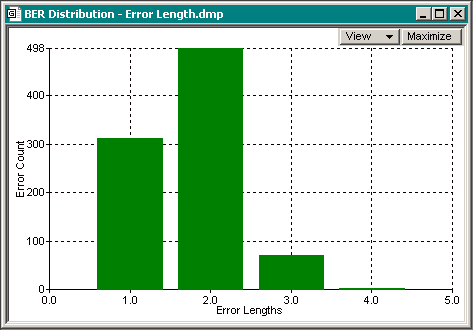
Figure 6: Error Distribution Versus Error Length
BER Performance
The BER Performance Test is a test designed for using in production. The test measures the best bit error rate and track width for the given level of BER for three track preconditions:
- Track on Erased Media – perform band erase, write a signal track and perform the measurement
- Track on Prewritten Media – perform band erase, write side tracks, write a signal track and perform the measurement
- Track with Adjacent Tracks – perform band erase, write side tracks, write a signal track, write adjacent tracks and perform the measurement
The test can be used in the production environment for head and media certification.
Guzik RWA-2000, RWA-2585, or RWA-2550 series
WITE32 Revision 3.30 or later
One of two licenses:
- BER module license (all tests)
- BER production license (BER Performance test only)
At least one of the PRML channels:
- Commercial PRML channels1
- D5000 Signal Analyzer (starting from WITE32 Revision 3.40)
________________
1 BER Module can run on CAI-4K, CAI-2K, and CAI-700 PRML Chip Adapters starting from WITE32 Revision 3.30.

